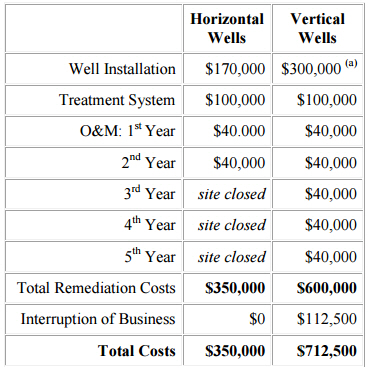Dealing with a site (or sites) that has proven to be difficult to remediate? You may want to consider Horizontal Well Technology if you are an environmental consultant looking for an answer to any or all of the following questions:
- Is your client insistent on there being no shutdown of his business?
- Have traditional remedial methods been exhausted with no substantial results?
- Is the cost of many years of monitoring concern?
Avoid costly business disruptions

No doubt about it, clients insist on avoiding business interruptions during remedial implementation field activities, whether it be on their property, or more importantly, a neighbor’s property. Horizontal wells can be installed on the client’s property in benign locations. Horizontal drill under client buildings and off-site structures and avoid prohibitively expensive business disruptions.
Horizontal Well Technology Results
Directional Technologies is regularly called in to successfully remediate sites after others have spent years and large sums of client dollars with little or nothing to show for it. Horizontal Remediation Wells exploit the natural tendency for shallow plumes in sedimentary systems to have significantly higher horizontal permeability than vertical (on the order of ten times greater). Horizontal well technology has the ability to precisely locate very long (hundreds of feet) horizontal well screen in the systems at optimal depths. This provides great plume coverage, ensuring a successful outcome.
Lower project life cycle costs with Horizontal Well Technology
Long horizontal well screens provide greater contact surface area with impacted media than traditional vertical wells. This superior physics of delivery avoids dead zones, provides more rapid pore volume exchange rates, and results in significantly faster time-to-closure.
Mid-Sized Clean-up Cost
